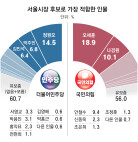S. Korea remains on U.S. watchlist for currency practices
S. Korea remains on U.S. watchlist for currency practices
Posted May. 30, 2019 07:30,
Updated May. 30, 2019 07:30
The U.S. Department of the Treasury released on Tuesday a list of countries to monitor for currency practices that still includes South Korea. Treasury, however, indicated that South Korea will be removed from the watchlist if the country maintains its current state until October.
The Semiannual Report on International Economic and Exchange Rate Policies of the Treasury Department for the first half of 2019 named nine countries, including South Korea, China, Japan, and Germany, as countries requiring close attention. India and Switzerland, which were included in the list released in October 2018, were removed while Ireland, Italy, Malaysia, Singapore, and Vietnam were newly added. The U.S. government views countries on the monitoring list as potential currency manipulators and is scrutinizing the possibility of their currency manipulation.
The three criteria for the monitoring list are: bilateral trade surplus with the U.S. over 20 billion dollars during the last one year; a material current account surplus over two percent of gross domestic product (GDP); and persistent, one-sided intervention in the foreign exchange market when net purchases of foreign currency over two percent of an economy’s GDP are conducted repeatedly in at least six out of 12 months. Countries that meet two out of these three criteria are put on the list under scrutiny. South Korea only meets the second criterion with its last year’s GDP of 4.7 percent. “Given that Korea now only meets one of the three criteria from the 2015 Act, Treasury would remove Korea from the Monitoring List if this remains the case at the time of its next Report,” said the Treasury Department.
The criteria for the monitoring list have gotten much stricter with the newly published report. The previous “a material current account surplus over three percent of gross domestic product” was revised to “two percent,” and “eight out of 12 months” was changed to “six out of 12 months” for the criteria for intervention in the foreign exchange market. In addition, the previous criterion for U.S. trading partners - “12 largest trading partners” - was updated to the countries whose “bilateral goods trade with the U.S. exceeds $40 billion annually.”
lightee@donga.com






![“작년에 얼린 떡으로 떡국 No!”…냉동 떡 2달 지나면 버려야 [알쓸톡]](https://dimg.donga.com/c/138/175/90/1/wps/NEWS/IMAGE/2025/12/31/132975107.3.png)
